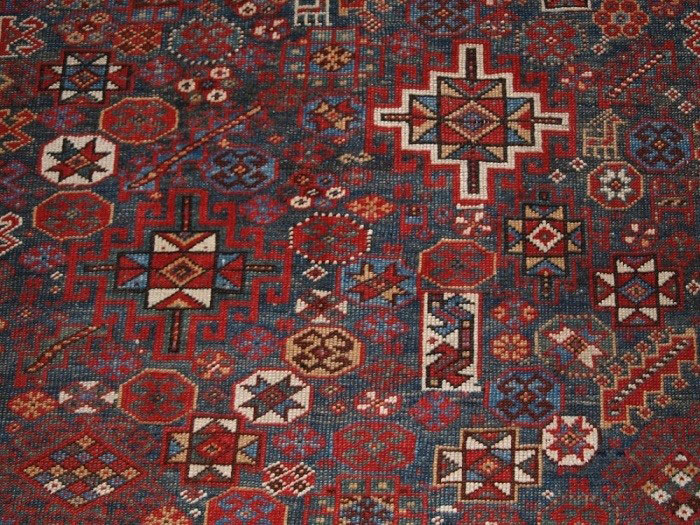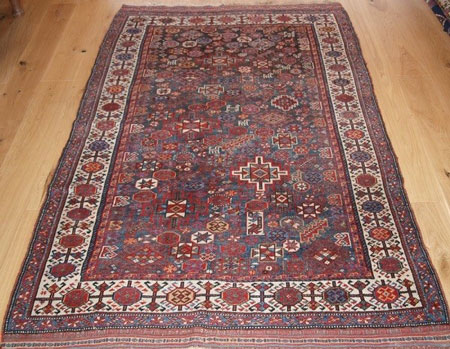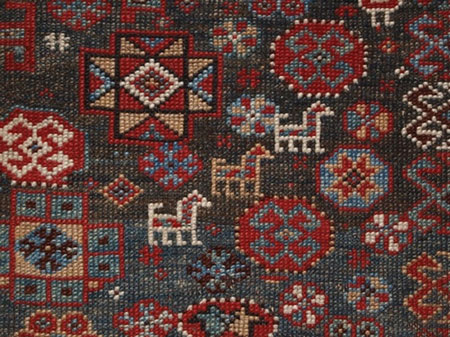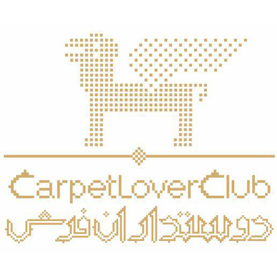
Luri are one of the most important nomadic tribes of South Western Persia. In much of their territory they live adjacent to the Qashqai tribes . Unlike the Qashqais who speak Turkish, the Luri are of Iranian origin and their language is similar to Persian. Various pressures in the twentieth century have forced many Luri to abandon the nomadic life and settle down in villages There are two main types of Luri rugs on the market. The first are the nomadic carpets produced in the South; these are called Luri Behbehan. They are similar to Qashqai rugs and made entirely of wool, but they use a different range of motifs and are fond of bright contrasting colours. A strong red is particularly predominant. The other type of Luri rug is marketed in the town of Khorramabad. These are squarer and more restrained in colour. The fringes are often beautifully braided. These are squarer and more restrained in colour often with using strong contrasts soft and strong reds.. The designs and sizes are very varied; all-over patterning is common. The unique designs used in the Luri carpets are typically with a knot density of roughly 170-250 KPSI (Knot Per Square Inch)or 2500-3600 per 10 cm2.
Persian Antique Lori rugs and carpets represent a unique and important development in the antique rug world. The Lori rugs were generally woven in or around the Zagros Mountains area of western Persia (which is the modern day country of Iran), by the Lurs. These Persian carpets are representative of the beautiful and tribal art of Persian carpet weaving. The Persian Lori carpets tend to depict geometric design repertories such as animal motifs and geometric figures. Persian Lori rugs tend to depend on rich combinations of colors – above all reds, blues, greens, and yellows. These vibrant hues and shades of beautiful rich and jewel tone colors contribute to the excitement that these unique tribal compositions provide. These weaving largely consist of bags and wrappings – but Lori weavers made fairly large carpets and scatter size rugs as well.
The Amazing Carpets of the Luri Tribe

The Luri a proud and colourful people with their ancient arts and mysterious rituals are one of the most ancient nomadic tribes of Iran, they still live a roaming and tribal lifestyle in the Lorestan Province of south west Iran to this day in the harsh, isolated and mountainous terrain. Living in the cooler climates of the Zagros Mountains in the summer and the low land and warmer areas of Persian Gulf in the winter. In the spring and summer months the Luri live in black goat-hair tents. In the colder months they move into double ended houses known as Zemga. These houses are half buried in the slope of a hill and are finished with boulders -leaving about 2/3 of the area of the dwelling covered by a roof of branches and sod. The carpets woven by the Luri represent some of the purest forms of Persian Rug weaving, they are widely renowned for their magnificent quality pile made with very fine hand-spun wool from the flat tailed sheep. The wool is produced in the Zargos mountains and valleys near to the city of Shiraz and is exceptionally soft and attractive, also being favoured as it takes a deeper colour and dye absorbance than wools from other parts of Iran. Luri weavers freely use their imagination to add motives and other patterns, symbols used are generally representational to their nomadic lifestyles, they also incorporate a broad range of other geometric shapes and patterns. Each piece has its own specifications and is a unique piece of art. Luri carpet weaving is exclusively undertaken by women, men only helping with the sheering of the sheep and sometimes for the collection and preparation of materials for the dyeing process. The Luri are one the few tribes Iran who have continuously used conventional dying techniques, even in the 1930 when synthetic dyes were considered by most of the world to be the best ways forward the Luri have always maintained their long-established vegetable dying techniques. The formation of the dye substances is perhaps one the most technically skilled aspects of achieving a impressive carpet – this skill is almost always held by the tribal elders who have this as a sole contribution to the carpet.
patterns of Lurestan carpet

Designs have been rarely changed and have been under influence of neighbor cities. In main and normal design background is divided into polygones in a small geometrica network that are famous as Shirshekari. There are star, roses and diamonds in different sizes and shpes like hook and animal heads in each on. Simplified image of the head of goat or sheep are seen which are animals visible in religious paintings since second millennium A.C and called Dyrnak in local dialect. Diamond designs has become as big as a medallion and even woven on sacks that women of Lor wove in the carpet wyle. Of course this design can be seen on sat bags. Carpets pf Lors are often called as products of Khamseh or Kurds wrongly and a lot of these carpets have been sold in Aligoudarz, Kermanshah, Behbahan and Nasrabad hence sometimes the names of these cities are heard.
khoramabad
Khoramabad backs to Sassanid era and most part of nomadic productions have been sold in its markets. Also there are small workshops in this area that carpets like Lor method have been woven in them to supply domestic markets. These carpets are persistent, thick but fine that usually are woven by dark wool with a special appearance in 140*190 cm. they have high pile, dark colors and a bit white or orange can be seen inside. Designs are geometrical and simple on some columns composed of medallions. Fringes are tightly woven to give a high persistence to the upper and bottom sides of the carpet during usage.



